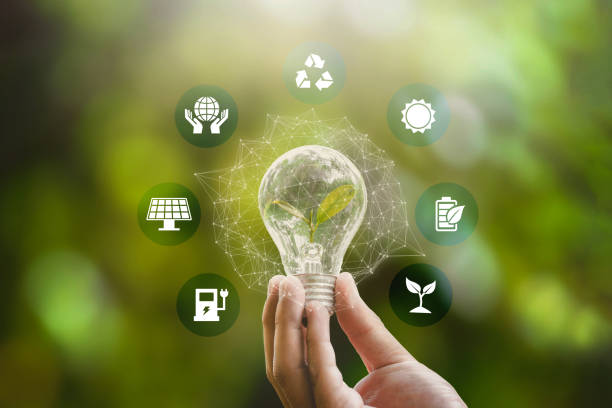As the world’s population grows, so does its energy demand. To meet this need sustainably and ensure continued growth in a reliable and environmentally friendly way, it is essential to diversify our energy sources. Renewable energy sources such as solar, wind, and hydroelectricity are becoming increasingly important in securing a sustainable future for our planet.

Nevertheless, they face significant challenges within the United States due to existing policies – provisions that must be updated to transition towards renewable solutions with tremendous success. This article will examine the critical significance of diversifying domestic energy sources in America by outlining existing issues within current regulations and exploring potential strategies to increase their uptake dramatically.
Introducing Renewable Resilience and its Role in Energy Sustainability
Renewable resilience refers to the ability of a country or region to generate energy through renewable sources consistently. It is a crucial aspect of sustainable development and has become an increasingly pressing issue in recent years due to the negative impacts of fossil fuels on our planet.
The concept of renewable resilience recognizes that relying solely on one energy source, such as oil or gas, is unsustainable and poses a significant risk to the economy, national security, and the environment. Diversifying energy sources is essential for ensuring we can adapt and respond to potential disruptions or shortages in our current energy systems. Check out how much are solar panels in Texas to learn more about the potential benefits of renewable energy in this state.
Overview of the US Electricity Grid System and Its Challenges
The US electricity grid system is highly complex and comprises three main components: generation, transmission, and distribution. Generation refers to producing electricity from various sources, including coal, natural gas, nuclear power, and renewable sources. Transmission involves the long-distance transportation of electricity from power plants to local utility companies. Distribution then delivers electricity to individual homes and businesses.
Despite its complexity, the US electricity grid system faces several challenges, including outdated infrastructure, reliance on fossil fuels, and inadequate storage capabilities for renewable energy. It has resulted in power outages and disruptions during extreme weather events such as hurricanes or heat waves.
Harnessing Renewable Energy Sources for Power Production
One of the most significant challenges in diversifying energy sources in the US is the dominance of fossil fuels. Coal and natural gas still account for over 60% of electricity generation, while renewable sources only comprise around 20%. To shift towards a more sustainable future, increasing the production and utilization of renewable energy sources is crucial.
Solar power has seen significant growth in recent years, and the cost of installing solar panels has decreased significantly. Wind power is also becoming increasingly competitive, with several states setting ambitious goals for wind energy production in the coming years. Additionally, hydropower remains a reliable source of renewable energy.
The Growing Significance of Renewable Resources in Climate Change Mitigation
Climate change is undoubtedly one of the most pressing and critical issues that our planet faces today. Its impacts are far-reaching and require immediate and concerted action from all of us. The use of fossil fuels contributes to the alarming rise in global temperatures and poses significant health risks due to the release of harmful pollutants into the air we breathe.
To address this challenge, transitioning to renewable energy sources is paramount. Not only are they cleaner and more sustainable, but they also have significantly lower carbon emissions compared to traditional fossil fuels. Embracing renewable energy technologies such as solar, wind, and hydropower can pave the way towards a more sustainable future for future generations.
In the United States, diversifying our energy sources is crucial in mitigating the adverse effects of climate change and reducing our carbon footprint. We can create a more resilient and sustainable energy system by moving away from our reliance on traditional energy sources and embracing renewable options. This transition will help combat climate change and drive innovation, create new job opportunities, and enhance energy security.
Examples of Successful Renewable Projects Across the United States
Several states in the US have already made significant progress in diversifying their energy sources and incorporating renewable solutions. For example, California, known for its commitment to sustainability, has set a target of reaching 100% clean electricity by 2045. This ambitious goal positions California as a global leader in renewable energy adoption, driving innovation and inspiring other states to follow suit.
With its abundant natural resources, Hawaii is also determined to achieve 100% renewable electricity by 2045. The state has made remarkable progress, with over 30% of its electricity coming from renewable sources in 2020. Through the implementation of solar, wind, and geothermal projects, Hawaii is paving the way for a sustainable future and serving as a model for other states to emulate.
Not to be left behind, Texas and Iowa have also witnessed significant growth in renewable energy production. Texas, famous for its vast wind farms, has become the leading state in wind power generation, contributing to its diverse energy portfolio. On the other hand, Iowa has made substantial investments in wind energy, with a large percentage of its electricity now sourced from wind turbines.
Final Thoughts on Making Renewable Resources More Accessible to Americans
In conclusion, diversifying energy sources in the US is crucial for ensuring sustainable development and mitigating the effects of climate change. It requires a combination of updated policies, investment in infrastructure, and increased adoption of renewable solutions.
It is essential to continue exploring and implementing innovative strategies to increase the production and utilization of renewable energy sources. With proper planning and support from both government and private sectors, the US can transition towards a more resilient and sustainable energy future. Let us all do our part in creating a cleaner and greener tomorrow for future generations.
Published by HOLR Magazine.


